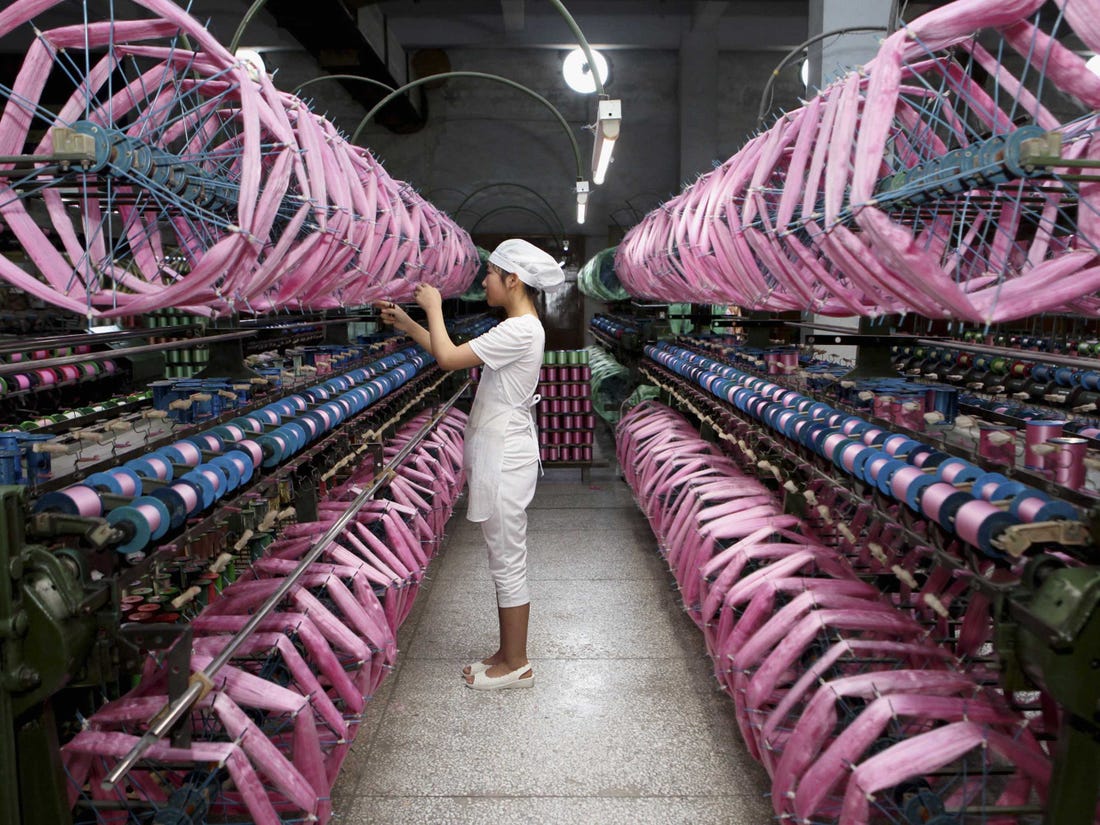Silk Sarees
Silk is highly regarded as one of the most valuable, royal, and luxurious fabrics over the ages being loved and adored by women all over the world to amp up their feminine charm and beauty. You may be surprised to know that India is the second-largest producer of silk and contributes to about 18 percent of the world’s production. The vibrant colors, lightweight fabric, smooth and glossy drapes, silk sarees have made their irresistible and astonishing presence on almost all occasions and functions.
The elegant and shiny fabric of silk has always a special place in women’s hearts. Dates back to 4500 years, no women’s wardrobe is complete without gorgeous silk sarees. It is the beauty, charm, and magic of these sarees that make any woman stand out from the crowd. They not only flaunt our traditional elegance but also bring a charismatic and timeless look which never goes out of fashion. Pairing up your silk sarees with ethnic ornaments will instantly boost things for you and make you the center of attraction
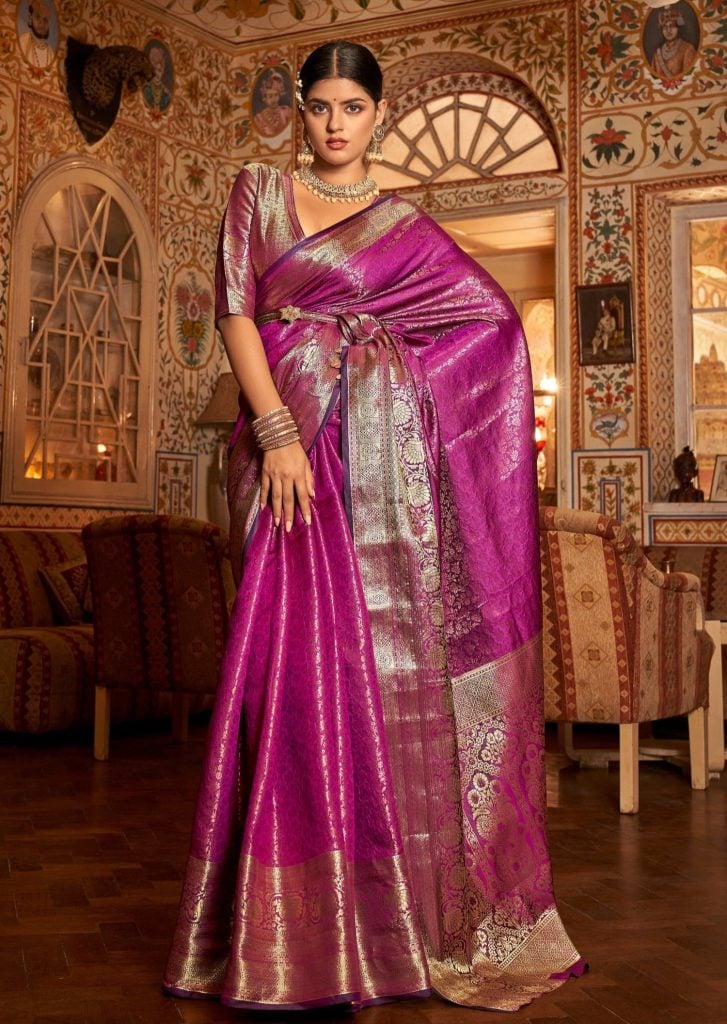
Apart from its luxurious softness, silk fabric has many other qualities as well that make it a perfect choice to be worn at any event. The unique temperature regulation properties of the silk fabric keep us cool and calm all the time while art silk sarees can be blended with stonework, block prints, thread work, and Gota work to enhance its silhouette without distracting from the beauty of the fabric. Indian silk has immense popularity all over the world with its variety of designs, weaves, and patterns but have you ever wondered how these silk sarees are made or manufactured? Here it is as follows:
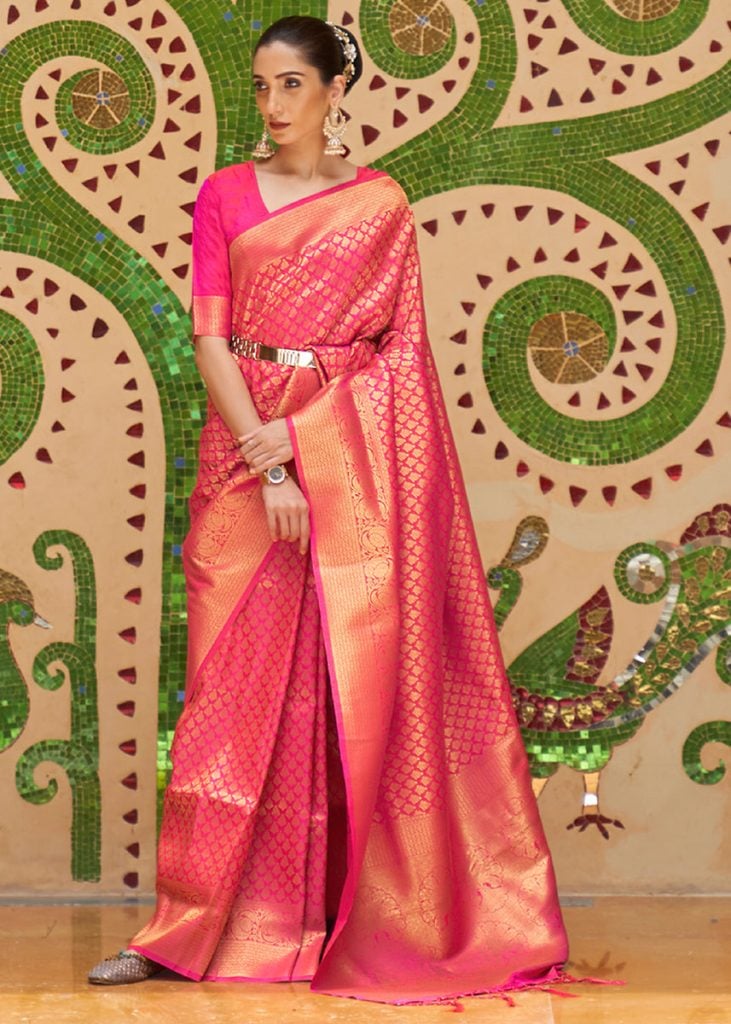
Manufacturing Process Of Silk Sarees
Silk is one of the oldest known fibers which is produced by the silkworms by spinning around its cocoon. The process starts from the eggs till the worms are grown up and cocoons are formed. The silk farmers let the caterpillars turn into moths so that they lay eggs, eggs hatched out more caterpillars making bigger cocoons.
For this, the silk farmers use the healthiest moths for breeding. Their eggs were then categorized and tested for any type of infection. After selecting the healthy eggs, they are placed in cold storage until they are hatched. Usually, the eggs would hatch once a year, and when the caterpillars are out, they get fed with leaves of Mulberry trees. To form the silk cocoon, these caterpillars start to move their heads back and forth. As they twist their head, they weave a double strand of fiber in a figure-eight pattern and create a symmetrical wall around itself. The whole process results in the raw silk fiber and the life of the worm gets ended by stoving the cocoons. Then it is processed in the factory to transform the cocoons into silk threads.
These silk threads are then dipped in the desired color combinations to prepare the colorful embroidered silk sarees. You may be surprised to know that it was the Chinese who started manufacturing silk sarees. However, if you want to know the entire process in detail, keep reading these points.
Here is the step-by-step guide to the marvelous process of silk manufacturing:
1. Sericulture
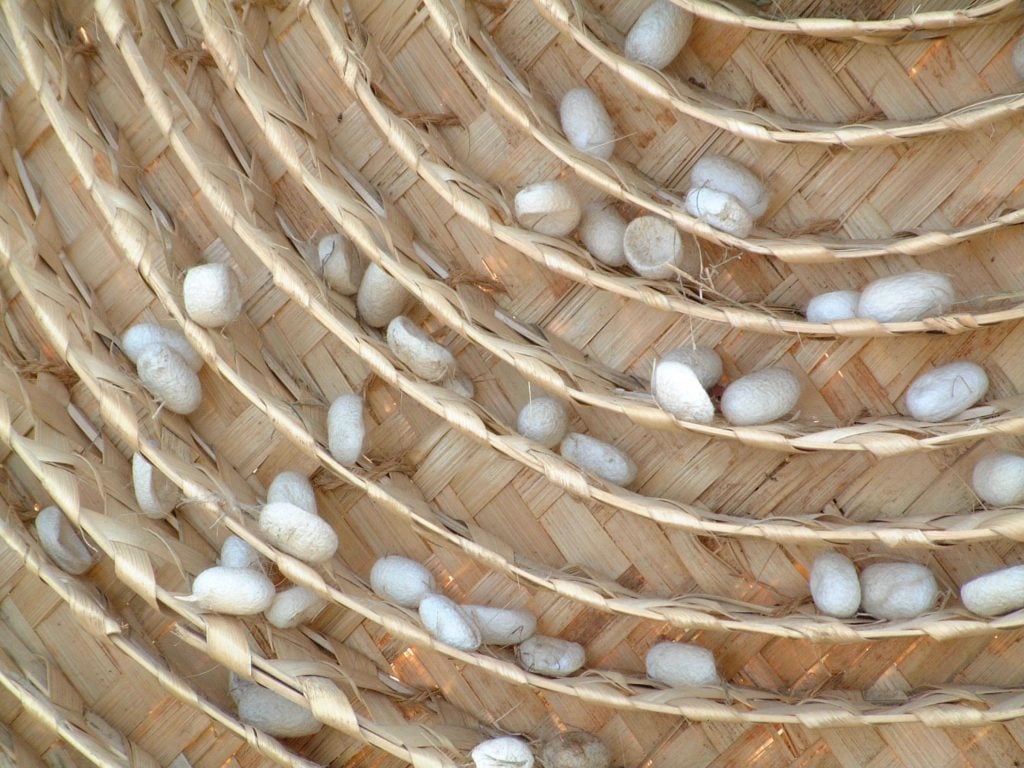
This is the process where the healthy silkworms get accumulated by the silk farmers and then cocoons are harvested to collect the material. For this purpose, the silk farmers use healthy moths for breeding. The female silk moths lay eggs from around 300-500 eggs at a time. The eggs are then graded and tested for infection, if there are unhealthy eggs, they get burned while the healthy eggs are placed in the cold storage to get them ready to get hatched. Once they are incubated in a controlled environment, they hatch within seven days. These silkworms are fed with a huge amount of mulberry leaves to improve growth. In the 6th week, they start forming the cocoon by rotating its body in a figure-eight pattern around a plethora of times. Each silkworm produces one single strand of silk measuring about 100 meters long.
2. Extraction of Threads

Once the cocoons are ready, the caterpillars get themselves enclosed inside them. This is where the process of sorting and smoothening the cocoons take place. In the filature process, the cocoons are sorted according to their features like colors and size so that the finished product could contain top quality. These prepared cocoons are placed into the boiling water to soften and dissolve the gum which is holding them together. This is the most important step in silk production where each thread is delicately reeled from the cocoon in individual long threads.
3. Dying of Threads
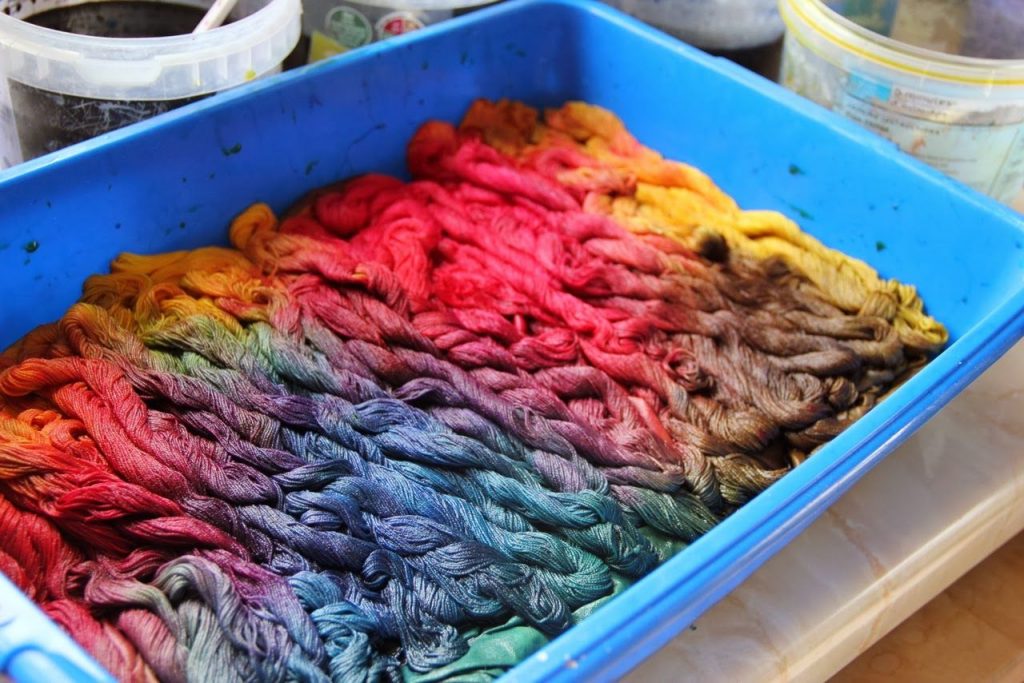
In this next step, the silk yarns are washed and degummed to remove unwanted things. Then these yarns are bleached and dried before implementing the dying process. If it is a traditional dyeing technique, the manufacturers use natural dye found in nature such as fruit or indigo plant leaves. After dying, the threads then soaked together in bundles. This process takes place multiple times over days so that the yarns will properly soak the colors and flaunt quality. With the advancement of technologies, manufacturers are using various dyes such as acid dyes.
4. Spinning
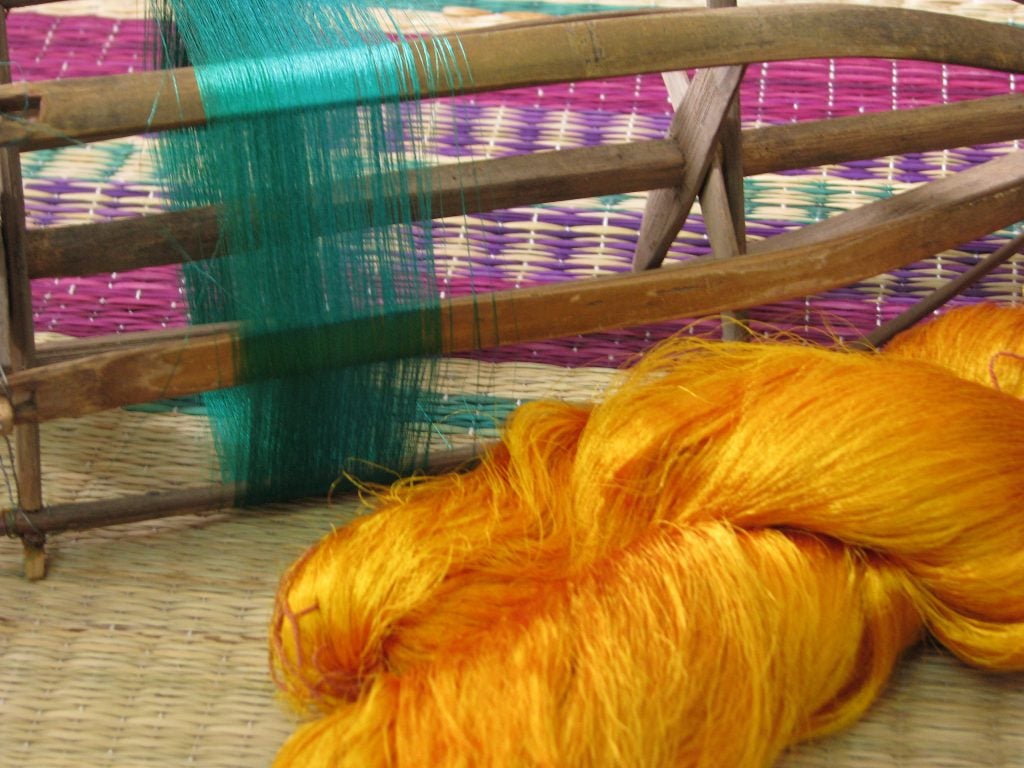
The process of silk production is not complete without using a traditional spinning wheel. It has always been an integral part of silk manufacturing. These days many advanced industries are now able to spin silk fabric with better quality. It can be done in several ways such as hand-spinning, ring-spinning or mule spinning.
5. Weaving
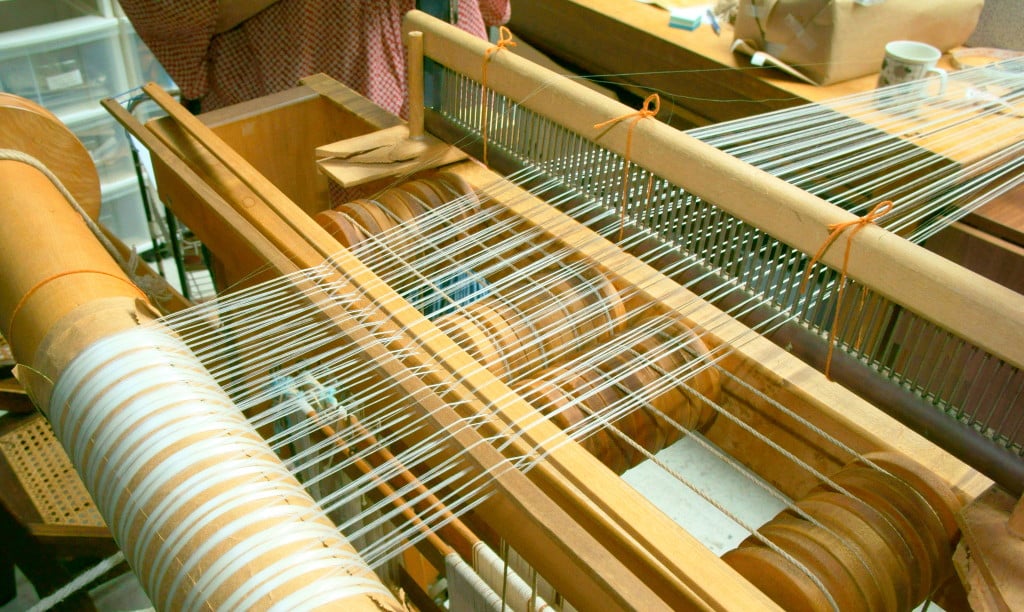
After spinning the silk threads, the finest pieces of silk threads are woven to bring them together in a top variety of fabric. In this step, the silk threads can be woven in a plethora of varieties such as satin weave, plain weave, and open weave. They are the most common ones while the finishing quality of the silk depends on the type of weave. But what exactly is a weaving process? It involves interlocking two sets of threads into each other to form a strong and firm piece of fabric. It is a crucial process that needs to be done carefully to form the right angles into each other.
6. Printing

After getting a shiny and smooth piece of silk fabric, the next step involves enhancing its look with beautiful prints. This task can be executed in two ways – Digital Printing or Screen Printing. The process of digital printing involves a specially designed textile printer with suitable inks to print hand-drawn or digitally produced work onto the fabrics. While on the other hand, screen printing is a more traditional, hands-on method that brings the same results. In some cases, a bolder or vibrant look can be achieved due to the implication of thicker ink.
7. Finishing Touches
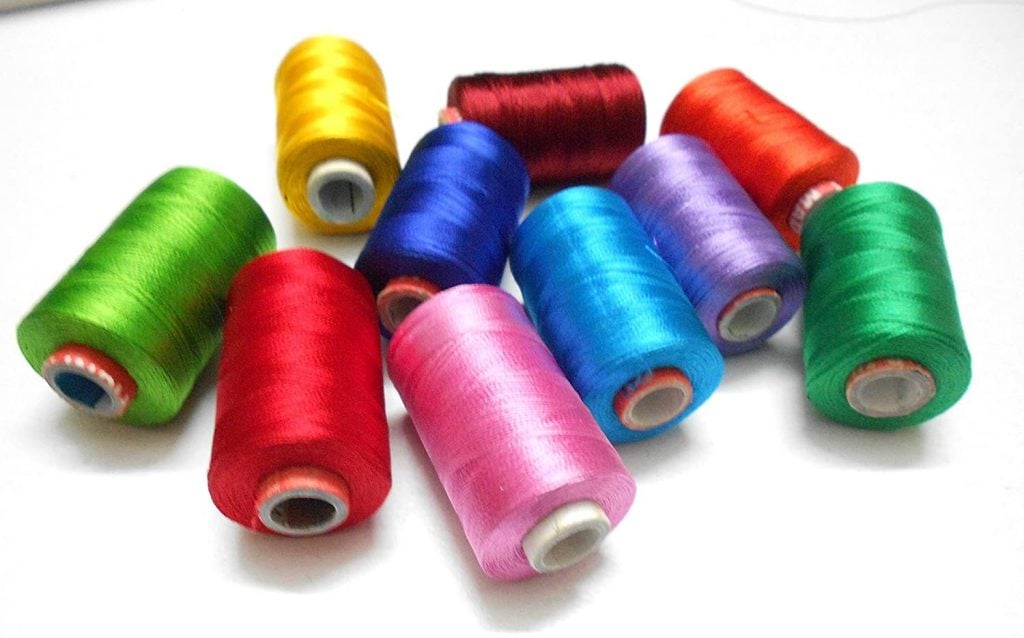
To bring a ready-to-use piece of silk fabric, the finishing touches play an important role to flaunt the desired look and feel of the saree. It is the finishing of the silk fabric that gives silk sarees a luxurious, elegant, and smooth silhouette. So, it is an important step. The task of silk finishing can be done in different ways but mainly it is done by applying different chemical treatments along with a bunch of valuable properties such as fire resistance or crease-proofing.
At Stylecaret, we have an outstanding and amazing variety of silk sarees that will make you look gorgeous and attractive on any occasion. From Kanjivaram silk sarees to Bhagalpuri, Mysore, Kota silk, and Banarasi silk sarees, you will get printed and embroidered silk sarees decorated with sequins, stones, beads, stones, and many more.

